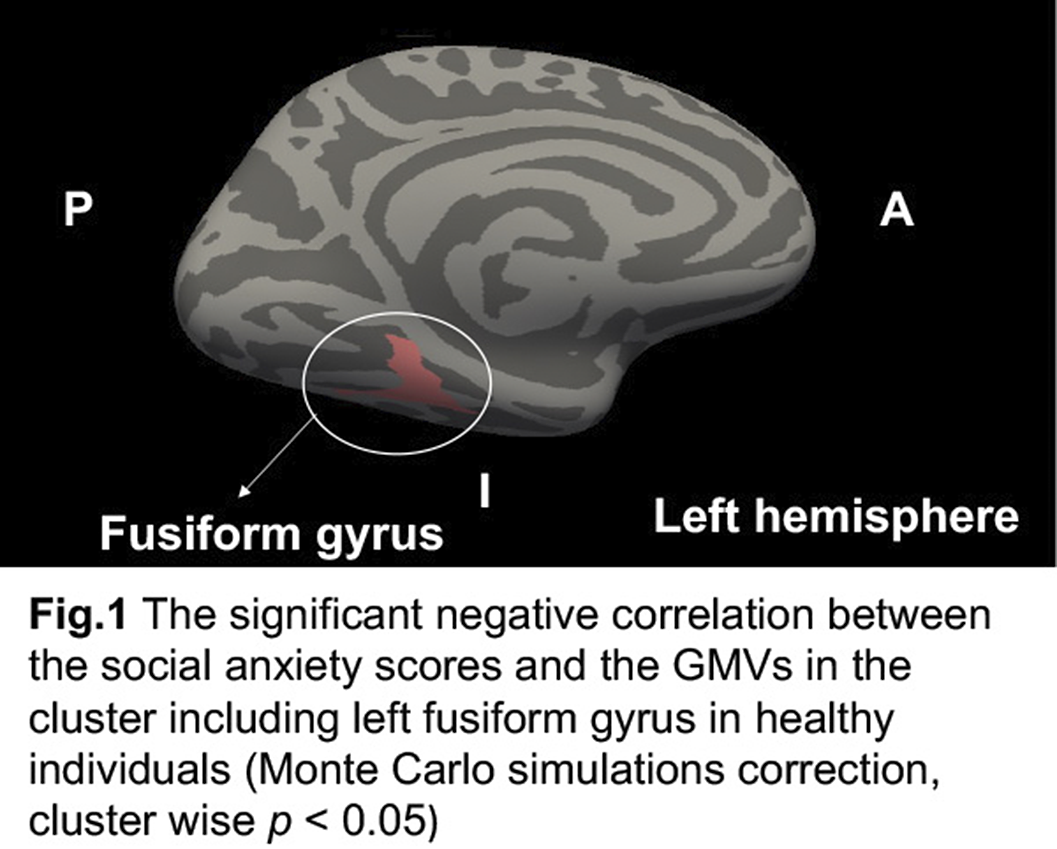No CrossRef data available.
Article contents
Fusiform Gyrus is Related to Subclinical Social Anxiety in Healthy Individuals
Published online by Cambridge University Press: 19 July 2023
Abstract
Subclinical or subthreshold social anxiety (SSA) is associated with significant burden. Up to 20% of general population report subclinical social anxiety symptoms, which can change individual social, work functioning.
However, neural mechanisms of SSA have not been fully investigated in healthy individual yet. This study aimed to examine the relationship between gray matter volumes (GMVs) and SSA.
We enrolled a total of 57 healthy individuals with SSA. The General Anxiety Disorder-7 (GAD-7), Beck Depression Inventory-II (BDI-II), Beck Anxiety Inventory (BAI), and Albany Panic and Phobia Scale (APPQ) were evaluated. Freesurfer was applied to investigated the relationship between SSA and GMVs. Multiple regression models with age, sex, and total intracranial volume as covariates were performed. Pearson correlation analyses also investigated the exploratory correlations between the GMVs of the SSA-related regions and other psychological characteristics among healthy individuals.
Freesurfer voxel-wise correlational analyses showed a significant negative correlation between the SA scores of APPQ and gray matter volumes (GMVs) in the fusiform gyrus (FG). In addition, the GMVs in the FG were significantly negatively associated with the total GAD-7, BDI-II, BAI, and APPQ scores. Performance anxiety was significantly correlated with posterior cingulate gyrus, parahippocampal gyrus and fusiform gyrus.
Image:

Our findings suggest that healthy individuals with SSA showed decreased GMVs in the FG and the GMVs of FG were associated with general anxiety and depression symptomatology.
None Declared
- Type
- Abstract
- Information
- European Psychiatry , Volume 66 , Special Issue S1: Abstracts of the 31st European Congress of Psychiatry , March 2023 , pp. S189
- Creative Commons
- This is an Open Access article, distributed under the terms of the Creative Commons Attribution licence (https://creativecommons.org/licenses/by/4.0/), which permits unrestricted re-use, distribution, and reproduction in any medium, provided the original work is properly cited.
- Copyright
- © The Author(s), 2023. Published by Cambridge University Press on behalf of the European Psychiatric Association



Comments
No Comments have been published for this article.